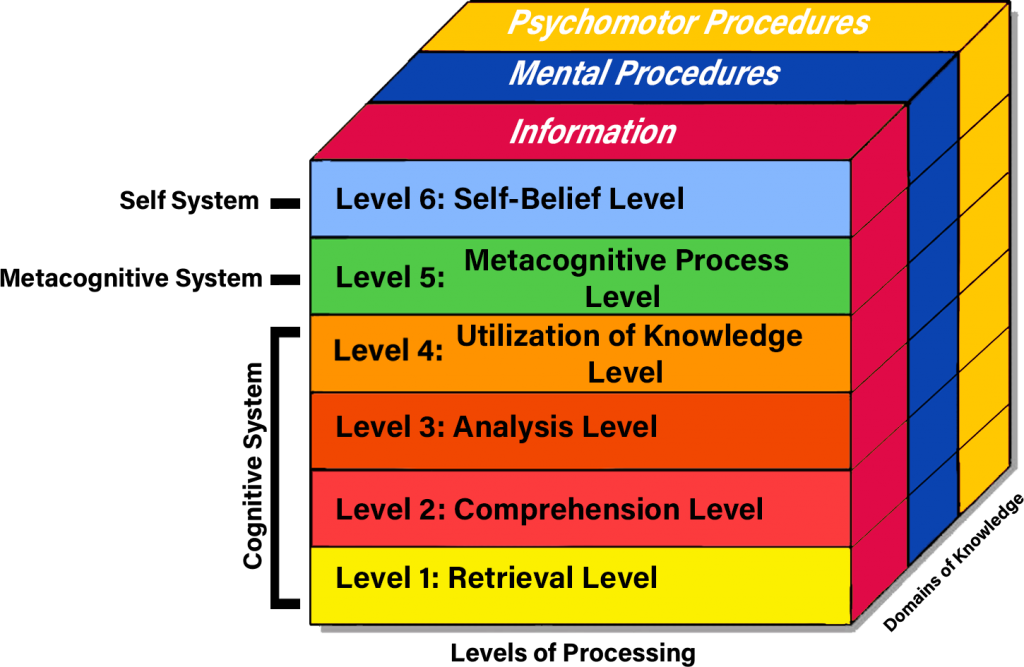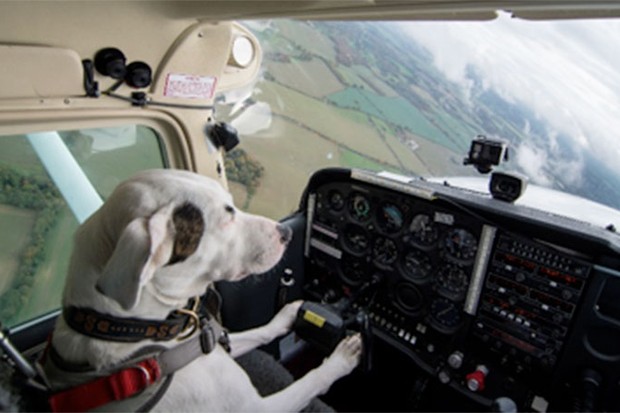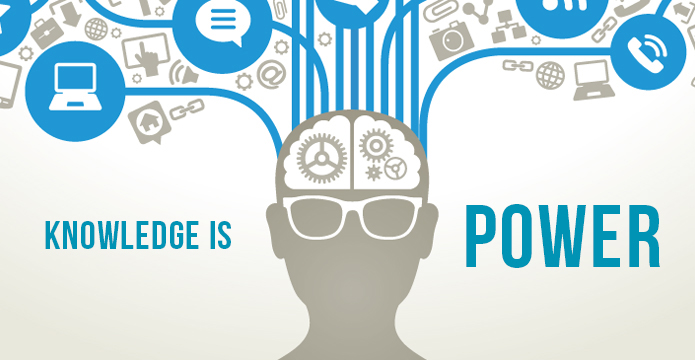The Theory Behind ATAR
With recent changes, ATAR and effectively the entire school system for years 10 to 12, is grounded in the theory of ‘the new taxonomy of education model’ by Robert Marzano. This model provides teachers the method to enhance student’s thinking skills through a process with 6 levels:

- Level 6: Self-Belief Level
- Level 5: Metacognitive Process Level
- Level 1: Retrieval Level
- Level 2: Comprehension Level
- Level 3 Analysis Level
- Level 4: Utilisation of Knowledge Level
Now, if you’re OCD – this isn’t a pretty numbering system! You are probably asking… ‘why are they partially numbered backwards’? However, please bear with me.
There are three systems at play… the self system, metacognitive system, and cognitive system. Each one of these systems relates to specific levels of the process.
As parents, it is important that we understand how the levels of learning and systems work together. This will help to provide students a strong support system to guide them through their studies.
However, in saying this, if this is the first time you have seen this model… it is probably a bit intimidating. To help, each level and the corresponding system has been outlined briefly below, and colour matched to the diagram above.
Firstly, coloured in BLUE, we have level six. This is the self system, which is the starting point for each student. Each student must establish a substantial degree of self-belief, open-mindedness, and optimism to learn new concepts and proceed to the next level.
The next level of learning is painted in GREEN – level five. This is the metacognitive system, which sets specific learning goals and monitors to what extent these goals are being met. For example, it will assess how well a student understands a topic and the accuracy of their knowledge.
Finally, we have all of the levels one to four in RED. All four levels are included in the cognitive system, as they work closely together. This oversees the processing of all the relevant information, through knowledge retrieval, comprehension, analysis and knowledge utilisation.
How do these systems work together?
Well, let’s put it into context… Sam, a grade 11 sports scholarship student is thinking about his upcoming cricket match on the weekend when he begins his Biology tutoring session.
Sam’s self-system decides to put thoughts about the match to the side and focus on engaging in the tutorial session. Sam’s metacognitive system tells him to pay attention to his tutor and ask questions to make sure that he understands the content. His cognitive system provides him with the strategies to recall this information to complete the practice question.
If you are still a bit lost, please don’t worry, as each level will be further elaborated on shortly. Also, if you are more a visual learner, please feel free to refer to the diagram above, setting out each system!
Domains of Knowledge
Now while the three systems process the information, the three Domains of Knowledge provide the necessary content:
- Information
- Analytical Processes
- Psychomotor
The purpose of this is to categorise different types of knowledge. Once categorised the knowledge is then processed accordingly.
As parents, we might not think too much of this. But, it is important to understand, as it impacts how our children learn and retain information.
Firstly, the Information domain refers to organising ideas, general principles, wider generalisations, and details. This is a very important concept as it allows us to retain more information with minimal effort. For example, when flying a plane, a pilot would look at the speedometer to see how fast the plane is flying and gather that information.

Secondly, Analytical Processes refer to instances where a certain topic is processed by comparing it to past knowledge or experiences. So, the pilot would use their knowledge, training, and experience to analyse whether the plane is moving at the correct speed to reach their destination on time.
Thirdly, Psychomotor refers to physical activity that is governed by mental processes. In this instance, the pilot has analysed that the plane is going too slow, and now uses their hands to grasp the accelerator and move it forward to increase the plane’s speed.
This is why dogs can’t fly planes!
Therefore, it is undeniable that the ‘Domains of Knowledge’ play a very important part of your child’s learning. As such, it is a positive thing that this has been included in the new ATAR system!
Feeling overwhelmed by the new system? Check out our ATAR FAQ’s

Level 6: Self-Belief System
The starting point… is the self system… level six. Also referred to as the ‘self-belief’ level.
It ensures that students are motivated and interested in learning the content, as well as being at school. Without this, the other levels are hard to achieve.
While schools address this level through leadership programs and school culture, self-belief forms the very result of what we seek to achieve here at A Team Tuition.
Academic Personal Trainers are trained to encourage students’, develop self-belief, and provide mentorship. The A Team Tuition model has a large focus on mentoring in the program and this addresses self-belief on a 1-on-1 level.
Here, we are very much dedicated to mentor, guide and help our students through their schooling years, especially as all of our Academic Personal Trainers have walked down that same path, thus obtaining first-hand experience and knowledge. They are true practitioners in the field of academics. This way, we ensure that all our students have the right support, strategies, and mindset to succeed by keeping them engaged both in school and during their home study.
Level 5: Metacognitive Process Level

The next step is the metacognitive system, which refers to level 5.
The metacognitive process is essentially “thinking about thinking”.
The term originates from the root word meta, which translates to “beyond” or “on top of”. This level involves using techniques and strategies to address the content provided and, in turn, maximise students’ ability to process information.
However, Level 5 is still relatively “untapped” by schools, which leads to the possible association of them with the idea of unfamiliarity by students, parents, and even schools.
We have crafted a program to help students maximise this untapped level. The ‘Creating A Students’ (CAS); a program that teaches students how to most effectively learn, ultimately creating “A” students by providing them with the 9 core secrets and strategies of “A” students. This involves teaching our students how to learn, not just their class content.
The terms ‘techniques and strategies’ that form the metacognitive process is KEY here – because they form a huge part of our program!
The nine modules in the Creating ‘A’ Students Blueprint are designed specifically to help students develop study techniques that are individually effective for themselves, rather than being one that is standardised for all students.
Now for the tricky bit… the cognitive system. As aforementioned this includes levels one to four.
Level 1: Retrieval Level

To start number one is the Retrieval level, also defined as the knowledge level.
“Knowledge, as defined here, includes those behaviours and test situations which emphasize the remembering, either by recognition or recall, of ideas, materials or phenomena”
This level includes the requirement of knowledge of specifics (terminology and facts).
Further, it also refers to the ways and means in dealing with those specifics (trends, sequences, criteria, and methodology).
It is based on the idea that such knowledge should be readily ‘recalled or retrievable’ especially during the end of year assessments.
Level 2: Comprehension Level
The second level concerns the intake of new information by students. This occurs through some form of communication that allows the student to grasp the meaning and intent of the material.
The three forms of comprehension are:
- Translation
- Interpretation
- Extrapolation.
Firstly, translation refers to circumstances where students summarise the respective information in their own words.
Secondly, interpretation refers to the act of explaining, reframing, or otherwise showing your own understanding of something. This requires a reorganisation of ideas into a new configuration in the mind.
Thirdly, extrapolation occurs when students make inferences and predictions based on literal information in the communication and principles and generalisation already possessed by the students.
Level 3: Analysis Level

The third level involves a detailed examination of the elements:
- Relationships among the elements
- Organisational principles that govern the elements.
This step is incredibly important and highly tested at school. Why? Because the quality of the analysis will consequently affect the comprehension of the new material.
Level 4: Utilisation of Knowledge Level

Next is level four! It’s time for the utilisation of knowledge!
It requires students to be able to correctly apply their newly learnt knowledge.
In other words, this level requires that students comprehend the material in order to proceed to the next level and achieve application.
Easy… right?
Benefits of ATAR

It is undeniable that the ATAR system better prepares students for University and the workforce, as it is based on an educational model that encompasses a more holistic way of learning compared to that of the old OP system.
It encourages independence, as well as a deeper level of cognitive function.
We recognise the importance of this change and have developed a program that addresses each level of the new taxonomy model that ATAR is based on! This is our 3 Step ATAR Transformation Program.
We provide our Academic Personal Trainers with the resources needed to mentor our students and prepare them for not just school examinations, but also a life-long career.
Given the support and resources, A Team Tuition can to help you leverage this system to your advantage, there is no need to hesitate on improving your academic future. With most students going backwards with the change to ATAR it is a prime opportunity to armour up and break away from the rest of the pack!
Still not convinced? Take a look at the 5 key positive aspects of ATAR
